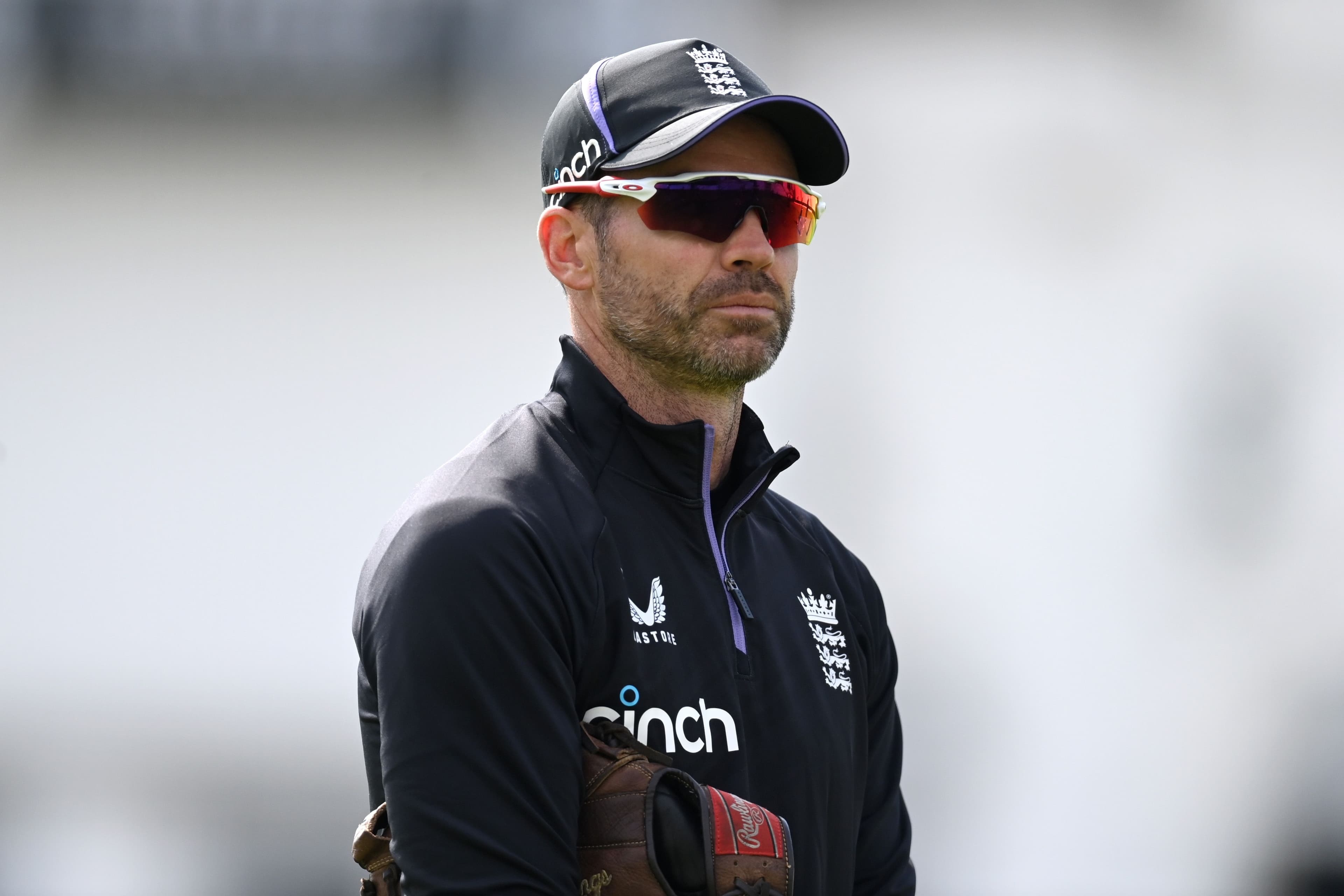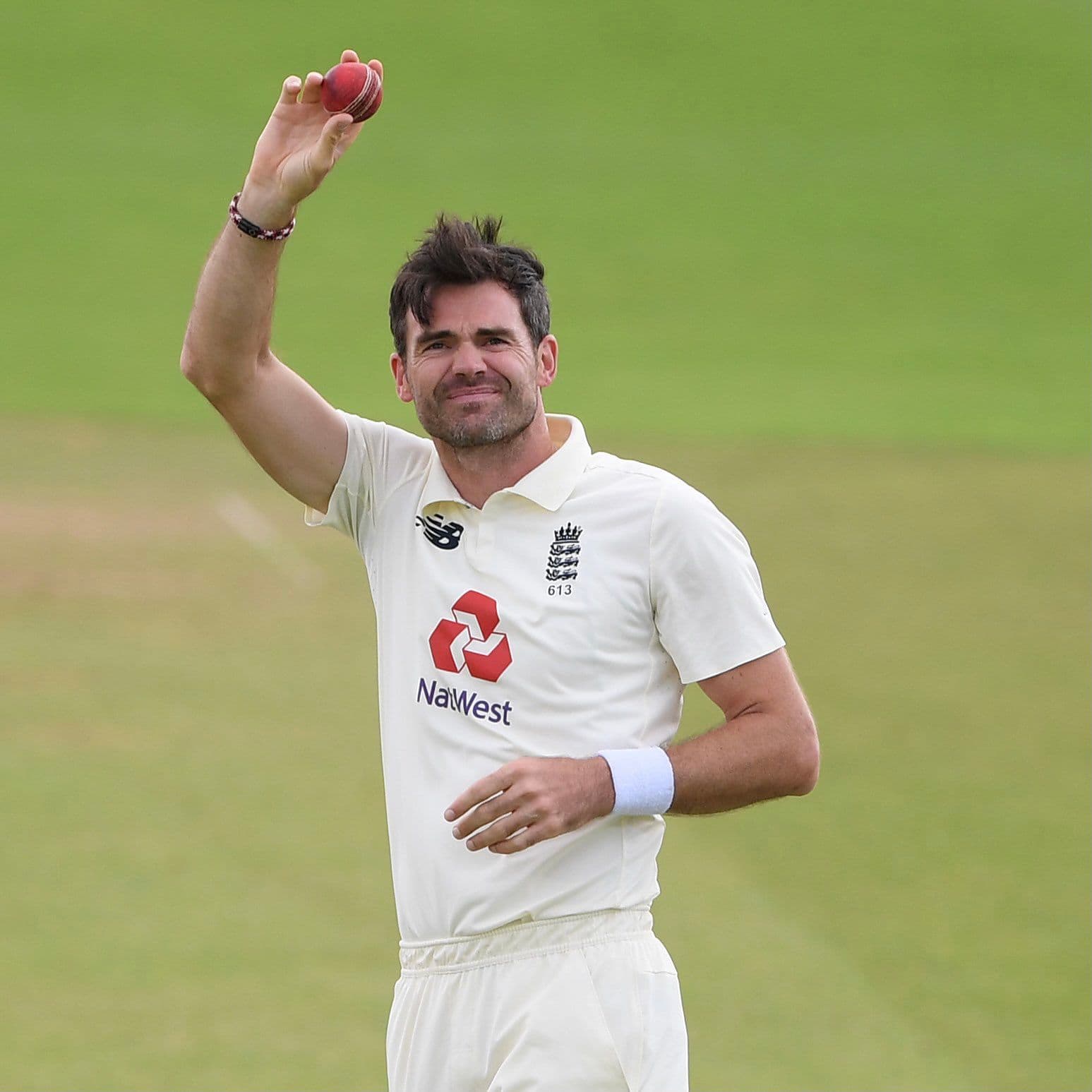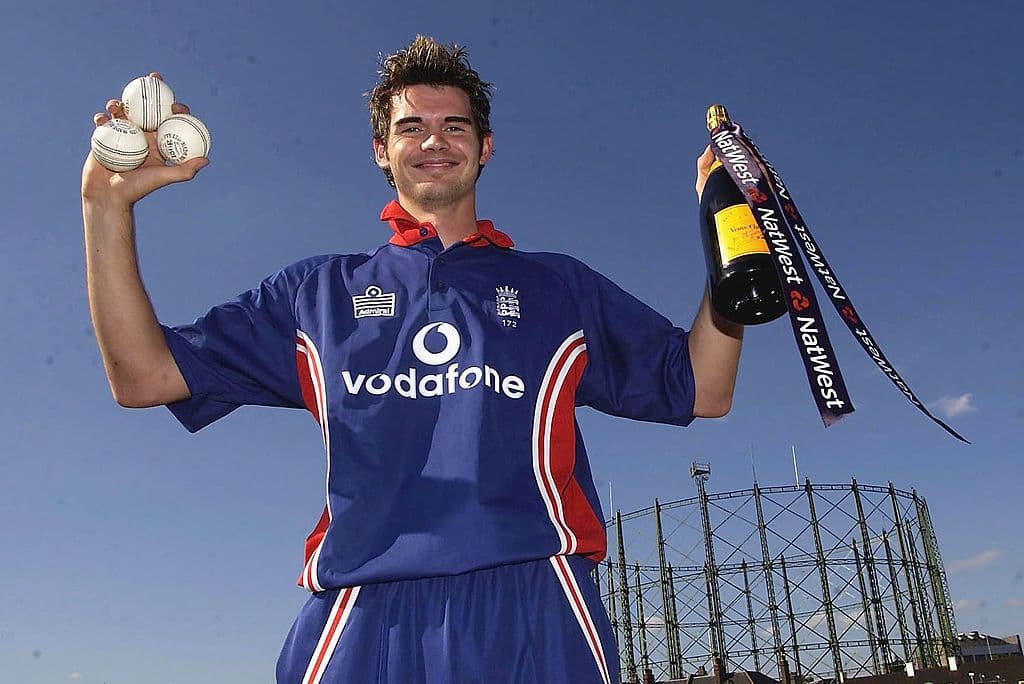Cricket
James Anderson at 41: Curtains Down on The Timeless Cricket Warrior
Though enduring 21 long years as a fast bowler is a miracle in itself, James Anderson has been more than a workhorse for the England cricket team. He has been an inspiration, a mentor, a great teammate, and a brilliant example.

As James Anderson stepped onto the field for his last game ever, against West Indies the Lords, he was seen wearing a unique pair of bowling boots custom-made by Adidas. It had "22.05.03'' stitched on the left and "10.07.24" on the right, applauding the unbelievable longevity that the Lancashire lad had shown on the cricket field. However, it isn’t durability that Anderson should be remembered for.
Sachin Tendulkar, widely believed to be the best cricket player to ever play the game, had lasted 24 years in national colors and the Master Blaster is globally revered not for his long service to the country but for what he passed onto future generations.
James Anderson - An Example in All Regards
Though enduring 21 long years as a fast bowler is a miracle in itself, James Anderson has been more than a workhorse for the England cricket team. Between the 188 national caps, 40,037 legal deliveries and a mind-boggling 704 wickets, Anderson has been an inspiration, a mentor, a comeback hero, a great teammate, and more importantly, a brilliant example.
Anderson’s current skipper Ben Stokes was only 11 years old when he made his Test debut in 2003. His vice-captain for the final match, Ollie Pope, was merely 5 while Shoaib Bashir wasn’t even born. England’s current bowling mainstay Chris Woakes was 14 back then and was taught the black art of wobble seam by Anderson only in 2014 - a skill that the Warwickshire man has only just perfected three years back.

Image for James Anderson from Getty
James Anderson’s final goodbye at the Lord’s was nothing like that of Stuart Broad’s at the Oval, where the former speedster had walked back by taking the final wicket of Alex Carey to hand England a win over Australia. The first Test between England and West Indies saw Gus Atkinson taking 12 wickets, as Anderson only had to be happy with four scalps across two innings.
A fairytale ending seemed on the cards though when West Indies’ Gudakesh Motie played an inswinger back Anderson, whose left hand missed a sitter. Hence, when Ben Duckett took the catch of Jayden Seales off Atkinson’s delivery, both players had a sense of despair in their body language.
Atkinson’s spell of 12 for 106 is the fourth-best figure in Test cricket history and the best by an Englishman for 134 years, but he was more dejected about robbing Anderson of his last wicket ever. Post-match Ben Stokes would reveal, “Gus apologized for taking that last wicket… Jimmy told him to eff off!"

Image for James Anderson Practice Session from Getty
Anderson had imparted the greatest lesson in his farewell, by subtly answering the biggest mystery of his career - “What kept him going all this while”. It was the love of the game. No kid picks up a bat or a ball to become the highest run scorer or wicket-taker in cricket history; but for the sheer joy that playing cricket brings.
The Phoenix Who Just Kept on Rising Relentlessly
Andreson was just three one-day games old for Lancashire when he was forced into the England ODI squad for the Australia tour 2002-03 as a backup for Andy Caddick. People wouldn’t recognize him, neither from the nor on TV screens as his jersey didn’t have a number or a name then.
However, an economical 10-over spell at Adelaide did turn heads and Anderson was included in the World Cup squad. The 2003 World Cup went hot and cold for the young Brit as barring a magical spell against Pakistan, Anderson was pushed on the backfoot by an underwhelming spell against Australia as England exited from the group stages.
The spark was surely there and England continued with Anderson, who took a five-wicket haul against Zimbabwe in 2003 and followed it up with an ODI hat-trick against Pakistan. But, as soon as he started to look dangerous, his progress was paused to change his bowling action, which was then injury-prone and affected his pace.
Anderson returned to the main team from being a net bowler after over a year where he was sidelined for most of 2006 with a stress fracture, although he still made the 2007 World Cup squad and the Australia tour.

Image for James Anderson in 2003
Anderson Traded Occasional Brilliance with Perennial Consistency
England were touring New Zealand during the 2007-08 season when Anderson was back in the Test team and partnered with Stuart Broad for the first time. He announced his return with a 7/43 at Trent Bridge against the Kiwis and would later be named among Wisden's Five Cricketers of the Year.
He would take nine wickets against West Indies the following year but the label of inconsistency on him was doing the rounds until 2009, when pundits pointed out that Anderson was unplayable when on song and toothless in the remaining parts.
However, that perception changed in 2010 when Anderson stopped relying on his special balls to focus on sticking to the impeccable line and length time and again. Wickets didn’t come in the beginning but Anderson kept getting dot balls and maiden overs repeatedly on every kind of pitch, which choked the batsmen to eventually give away their wickets.
Anderson approached the 2010-11 Australian tour in fiery form with a career-best 11-wicket haul against Pakistan and changed his reputation forever with a 24-wicket return.
Becoming the Most Complete Fast Bowler
Before one could realize it, Anderson had mastered the art of swing and seam bowling to perfection. His new line while reverse swinging the ball was a cherry on the cake and he soon edged past Brian Statham’s 252 Test scalps to become Lancashire’s best fast bowler.

Image for James Anderson Celebrating after taking a wicket from Getty
Former India captain MS Dhoni had Anderson as the main difference between the two sides when he returned with 12 wickets at 30.25 on Indian soil that year. Anderson would become the fourth English bowler to reach 300 Test wickets the next year and started the Ashes on a promising note by taking 10 wickets at Trent Bridge.
Though England lost the Ashes that year quite comprehensively, Anderson continued his form taking 37 wickets against India and Sri Lanka in 2014. Despite being England’s best bowler in white-ball cricket at the time, Anderson called it quits from the 50-over format with 269 wickets in 194 ODIs after England’s group stage exit from the 2015 ODI World Cup.
Injury returns to haunt high-flying Anderson
James Anderson was soaring while the England cricket team was blowing hot and cold. He had broken Ian Botham’s record of 383 wickets effortlessly and wasted no time in reaching 400 scalps against New Zealand at Headingley. He had turned 33 but his bowling accuracy, rhythm and fitness showed glitch whatsoever.
While many prophesied Anderson’s retirement then, the bowler kept marauding on proving the critics wrong taking as many as three five-wicket hauls in consecutive Test matches against Sri Lanka on the home soil. However, the relentless work and aging body saw Anderson suffer a shoulder injury in 2016, which directly affected the national Test side who were beaten 4-0 by India away from home.
The ageless hero carried on
By now, such short blips didn’t bother Anderson and he returned with a fiery average of 14.10 against South Africa and West Indies with the 500-mark looming large. He was England’s biggest weapon as England defeated Australia at home before running over a 4-1 series win against a traveling Indian team.
Anderson dismissed Mohammed Shami during that series to leapfrog Australian great Glenn McGrath’s Test record of 564 wickets. Interestingly, Anderson’s final wicket, the 704th, that came in the form of Joshua da Silva at the Lord’s, was an embodiment of the perfect delivery that McGrath had once described.
The former fast bowling great had explained that “... half a bat's width is all you're ever really looking for as a fast bowler. Anything more, and you're relying on battery error. Anything less, and the best in the business will be finding the middle of their bat.”
Anderson’s final wicket in Test saw the ball curling from the leg stump to the off to gently kiss the wicket and dislodge the bail. To perfectly execute that outswing, the length and the angle, one must feel the craft of swing bowling - something that Anderson had been doing for years now.

Image for James Anderson Farewell Match from Getty
James Anderson in Numbers
- Anderson sits on the list of most Test matches (188) played by a player in cricket history today. Only batting legend Sachin Tendulkar tops him with 200 Tests.
- An absolute masted of swing bowling, James Andersion sits first on the list of bowlers taking wickets by edging the batter to the wicket-keeper. Anderson has 199 wickets caught behind with McGrath trailing him in the second position (152).
- Anderson is also second to only Sri Lanka’s Muttiah Muralitharan, cricket’s highest wicket taker, in taking most wickets in a single ground. While Muralitharan took 166 in Colombo, Anderson has 123 scalps to his name at the Lord’s.
- Anderson is the third fastest bowler to reach 700 wickets in Test wickets after Muralitharan and Shane Warne, and would probably remain the only fast bowler to boast such a record. While the two spinners took over 14 years to reach the 700th wicket milestone, Anderson attained it in 20 years and 290 days.
- Anderson has bowled 40,037 legal deliveries, which is the most by a fast bowler ever. He sits fourth on the overall list though, after Muralitharan, Warne and India’s Anil Kumble.

An M.A. in English Literature, Subhayan is an experienced journalist and sports writer. Having worked as a journalist at Hindustan Times, Subhayan covered diverse beats including sports, education, and health, showcasing his versatility and in-depth understanding of various subjects.